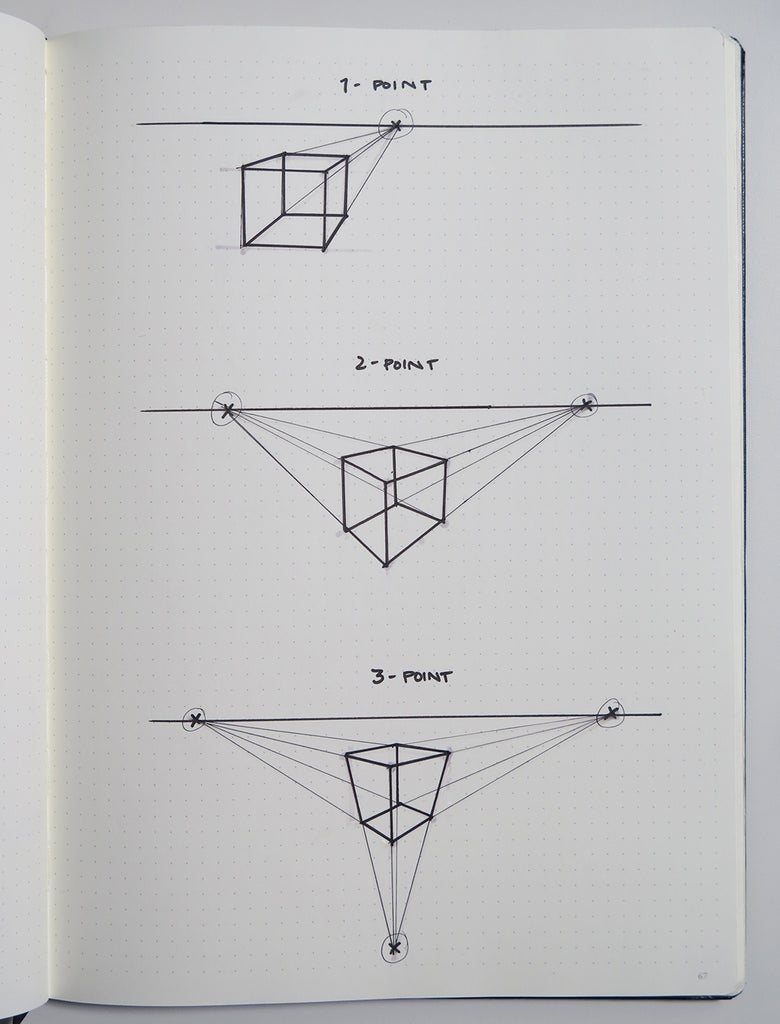Introduction: How to Draw Perspective: for Makers
This instructable will cover the basics of drawing rectilinear shapes in 2 point perspective.
The previous Instructable in this series covered the basics of selecting drawing tools, drawing posture and making a straight line.
Here's a link to my other drawing Instructables:
https://www.instructables.com/id/How-to-Draw-For-Makers/
https://www.instructables.com/id/How-to-Draw-Perspective-II-For-Makers/
https://www.instructables.com/id/How-to-Draw-Rendering-For-Makers/
https://www.instructables.com/id/How-to-Draw-Constructing-For-Makers/
Step 1: What Is Perspective?
Perspective is a method of drawing objects on a two-dimensional surface to give the right impression of height, width, depth, and position in relation to each other.
There are 3 main types of perspective drawing:
- 1 point perspective
- 2 point perspective
- 3 point perspective

The number of points in each perspective refers to the number of vanishing points used in the drawing.
Vanishing points are the points in space that lines recede to.
We will be focusing on 2 point perspective because it best represents how we see objects in everyday life.
Step 2: 2-point Perspective Cube From a Square
Follow the steps below to project a flat square into a 2-point perspective cube.
Why start with a cube? All other shapes can be derived from a cube. It is the simplest 3 dimensional shape to draw in 2-point perspective.
First draw a square rotated slightly on it's point. Make sure all the sides are equal and at 90 degrees to each other.
Next establish your horizon line and select 2 vanishing points roughly at either end of the horizon line.
Now extend vertical lines straight down form each corner of the cube.
Draw a line a few inches from the horizon line that is the same length as the sides of your cube.
draw lines to each vanishing point as shown below and define the final lines of your cube in a thicker line weight.
You may use a ruler for these steps.

Once you've practiced this with a ruler a few times and understand how it works try it free hand.
Then try it without extending your lines all the way to your vanishing points. You can check if your perspective is correct by extending the lines if they all converge at the same point you've got it right! Correct your lines using another color.
As you're practicing remember to always draw through your shape. That means drawing all the lines even the ones that you wouldn't see if it were a solid opaque object. This will help make sure your structure is accurate.

Step 3: Planes
Try moving a plane (just one of the surfaces of a cube) around in 2-point perspective.
What happens when you move it higher or lower?
Can you rotate it in space?

Step 4: Field of Cubes
Practice drawing a field of cube that all use the same vanishing points.
Focus on keeping your perspective right on all the cubes.
Keep in mind that if you only consider one cube relative to another rather than each individual cube relative to the vanishing points mistakes may compound.
For example if you mess up the perspective slightly on one cube and then base the perspective of the next cube off of the previous one it will also be incorrect.

Remember to keep practicing these perspective exercises everyday.
Correct each page of cubes to ensure you aren't repeating your mistakes.
It might be fun to find a drawing partner and swap pages to correct each other's perspective.













